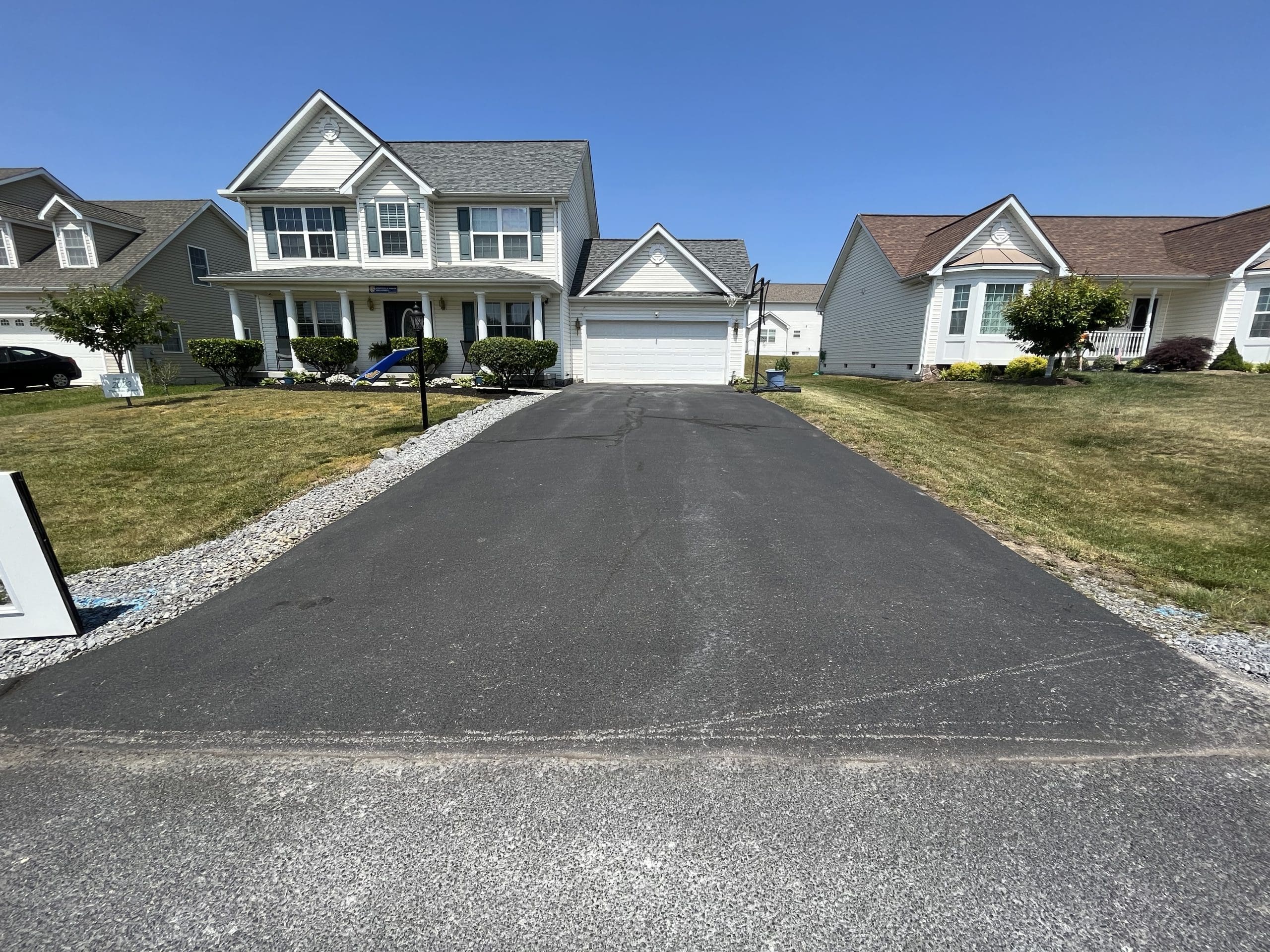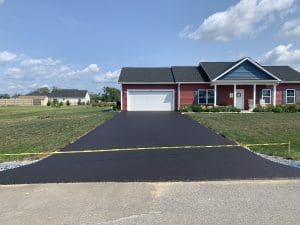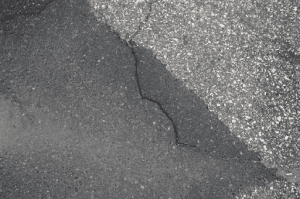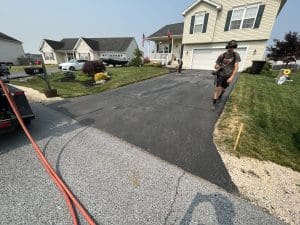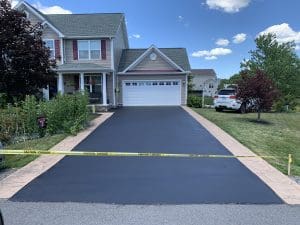Exploring the Cost-Effectiveness of Sealcoating: Everything You Need to Know
Pavement maintenance is a critical aspect of preserving the integrity of your property’s asphalt surfaces, and sealcoating stands out as a cost-effective solution. By acquainting yourself with the essentials of sealcoating and assessing its effectiveness, you can make informed decisions about harnessing the power of Top Gun Sealcoating’s services.
Cracking the Code: The Basics of Sealcoating
Sealcoating serves as a protective layer meticulously applied to asphalt surfaces. Think of it as armor for your pavement, defending it against the relentless onslaught of destructive elements such as UV rays, water, and chemicals.
But what exactly is sealcoating made of? Typically, it comprises a blend of refined coal tar or asphalt-based emulsion, water, mineral fillers, and additives. While formulations may vary by manufacturer, the overarching goal remains consistent: to elevate pavement performance and longevity.
When it comes to sealcoating, different types are at your disposal. One prevalent variety is coal tar sealcoat, crafted from refined coal tar and known for its remarkable shielding properties against UV rays and chemicals. Another contender is asphalt-based sealcoat, hailing from asphalt emulsion, boasting durability and flexibility in delivering a protective embrace.
Sealcoating doesn’t merely offer a cosmetic makeover for your pavement; it plays a pivotal role in pavement maintenance and safeguarding. By applying sealcoat, you’re effectively sealing the surface, thwarting water’s insidious infiltration into the asphalt. This vital step helps mitigate the risk of cracks, potholes, and other pavement woes, all rooted in water penetration.
Sealcoating in Action: The Process
The sealcoating process kicks off with the meticulous cleaning and preparation of your pavement, ensuring proper sealcoat adhesion. Any existing cracks or potholes are diligently filled and restored before the sealcoat graces the surface. Once prepped to perfection, the sealcoat is spread evenly, leveraging specialized equipment such as a squeegee or spray system.
Post-application, the sealcoat requires time to cure and set, typically spanning 24 to 48 hours, contingent on weather conditions. During this curing window, it’s crucial to abstain from any traffic or heavy objects traversing the freshly sealcoated surface, allowing for seamless bonding and hardening.
Sealcoating’s Role in Pavement Maintenance
Pavement surfaces are embattled daily by relentless weather, vehicular traffic, and external factors that exact a toll through wear and tear. Sealcoating plays an indispensable role in thwarting these adversities by forming an impervious shield that bars entry to harmful elements.
By sealing the surface, sealcoating acts as a guardian against oxidation, a nemesis of asphalt that sparks cracks and deterioration. The result is a velvety, uniform veneer that not only fortifies the pavement but also confers a fresh, onyx finish.
Beyond the prevention of water and UV damage, sealcoating also lends resistance against oil, gasoline, and other chemical aggressors. These substances can inflict havoc on the asphalt binder, expediting aging and structural degradation. The sealcoat effectively serves as a guardian, barring these chemicals from permeating the pavement and sowing destruction.
Sealcoating, ideally integrated into a comprehensive pavement maintenance regimen, is typically recommended every two to three years. This ensures that your pavement remains impervious to harm, extending its vitality.
Moreover, sealcoating bolsters the safety quotient of your pavement. The silky, black surface birthed by the sealcoat heightens visibility, a boon during nighttime or inclement weather conditions. This translates into reduced accident risks and an enriched overall driving experience.
Calculating the Cost of Sealcoating
Though sealcoating boasts an array of benefits, understanding the cost dynamics associated with this maintenance practice is paramount. By dissecting the components of sealcoating costs and considering the influencing factors, you can prudently chart your pavement maintenance budget.
Deconstructing Sealcoating Costs
The cost of sealcoating is contingent on an amalgamation of factors, encompassing pavement area, condition, accessibility, and the pricing structure adopted by your contractor. Typically, costs are measured in square footage, encapsulating an average cost per square foot.
Beyond material and labor expenses, you may also encounter additional costs, such as crack sealing and pavement repairs. These auxiliary expenses must be factored into the overarching budget.
Factors Influencing Sealcoating Costs
A medley of factors can exert an influence on sealcoating costs. These include the pavement’s dimensions, its current state of repair, the extent of preparation required, and the region’s labor and material pricing. To arrive at an accurate cost estimate, meticulous consideration of these facets and solicitations of quotes from reputable contractors are essential.
Regularly scheduled sealcoating, typically recommended every three to five years, can wield a palpable impact on cost savings in the long term. It provides insurance against costly repairs or complete resurfacing endeavors, making it a shrewd choice for budget-conscious property owners.
Evaluating the Return on Investment (ROI) of Sealcoating
Before committing to sealcoating, it’s essential to gauge its ROI, evaluating its long-term cost-effectiveness. By understanding how to measure sealcoating’s performance and longevity, you can make informed decisions about your pavement maintenance investment.
Quantifying Sealcoating’s Performance
Assessing the performance of sealcoating involves examining key performance indicators. These encompass a reduction in cracks, the resilience against water damage, the warding off of oxidation, and the ultimate extension of the pavement’s lifespan.
A systematic approach to measuring performance involves conducting regular inspections and maintaining meticulous maintenance records. By juxtaposing the pavement’s condition pre-and post-sealcoating, property owners can glean insights into the tangible benefits rendered by this practice.
Unpacking the Longevity and Durability of Sealcoating
The durability and longevity of sealcoating hinge on several factors. These encompass the quality of the materials harnessed, the precision of the application process, and the commitment to ongoing pavement maintenance. An expertly applied and faithfully maintained sealcoat can bestow protection that spans several years.
It’s crucial to acknowledge that sealcoating isn’t an eternal solution. Time, alongside factors such as traffic volume, environmental conditions, and the customary march of wear and tear, necessitates periodic reapplication. Vigilant inspections and conscientious maintenance constitute the bedrock for preserving the sealcoat’s longevity and durability.
Unearthing the Economic Benefits of Sealcoating
Beneath the surface, sealcoating unveils an array of economic benefits for property owners. By considering the cost savings engendered by regular sealcoating and its far-reaching impact on property value, it becomes evident that sealcoating emerges as a cost-effective investment in the long haul.
Savings Beckon Through Regular Sealcoating
Scheduling regular sealcoating appointments ushers in financial savings over the long term. Shielding the asphalt from premature deterioration, sealcoating diminishes the need for extensive, costly repairs and replacements. It simultaneously preserves the pavement’s structural robustness, averting potential liabilities and safety concerns.
When pitted against the expenditure of comprehensive pavement repairs or complete resurfacing undertakings, the costs linked with routine sealcoating appear remarkably modest. By channeling resources into preventive maintenance via sealcoating, substantial savings crystallize over the pavement’s lifespan.
The Influence of Sealcoating on Property Value
The condition and appearance of your property’s pavement bear significant weight in shaping its overall value and curb appeal. Pavements that bask in meticulous maintenance, punctuated by the embrace of sealcoating, amplify the aesthetic allure and cast a positive first impression upon visitors and prospective buyers.
Properties boasting well-kept pavements frequently command elevated selling prices and allure an amplified cohort of potential buyers. The outlay for sealcoating assumes the guise of a sagacious investment, poised to deliver substantial returns by augmenting property value.
Making Informed Choices: Is Sealcoating Cost-Effective?
As you stand at the crossroads, contemplating the wisdom of sealcoating for your property, a comprehensive evaluation of its merits and demerits, coupled with thoughtful pondering of crucial factors, is indispensable. Armed with this discernment, you can carve out a path forward.
Balancing the Scales: Weighing Pros and Cons
On the affirmative side of the ledger, sealcoating unfurls a litany of benefits: staunch protection against destructive elements, extension of pavement vitality and allure, formidable cost savings over the long term, and an upswing in property value and curb appeal.
Nevertheless, there are facets that merit consideration. Sealcoating necessitates an upfront investment, albeit one that skews considerably lower than alternate pavement maintenance routes. Additionally, periodic reapplication and a commitment to ongoing maintenance are prerequisites to keep the sealcoat performing optimally.
Key Factors to Mull Over Prior to Sealcoating
Before the ink dries on your decision to invest in sealcoating, a meticulous inventory of key considerations is imperative. The pavement’s existing condition, the estimates swirling around the cost front, and your overarching maintenance budget constitute vital elements.
Securing professional insights from reputable contractors can offer invaluable guidance and assist in the formulation of a judicious decision. Moreover, introspection into the long-term plans for your property, coupled with an assessment of anticipated foot traffic and usage, furnishes the clarity required to ascertain the ideal sealcoating frequency. Armed with this panoramic perspective, you can confidently stride forward, assured that sealcoating aligns seamlessly with your pavement maintenance requirements.
In conclusion, sealcoating emerges as an eminently cost-effective solution for safeguarding and prolonging the vitality of asphalt pavements. By peeling back the layers of sealcoating’s fundamentals, scrutinizing its economic merits, and painstakingly dissecting cost factors and key considerations, property owners can prudently navigate the terrain of pavement maintenance. Sealcoating, when viewed through the prism of a long-term commitment to performance, is an investment that promises to yield manifold dividends. With sagacity and a keen eye on the future, you can harness the prowess of sealcoating to ensure that your pavement stands the test of time, exuding resilience and allure.
